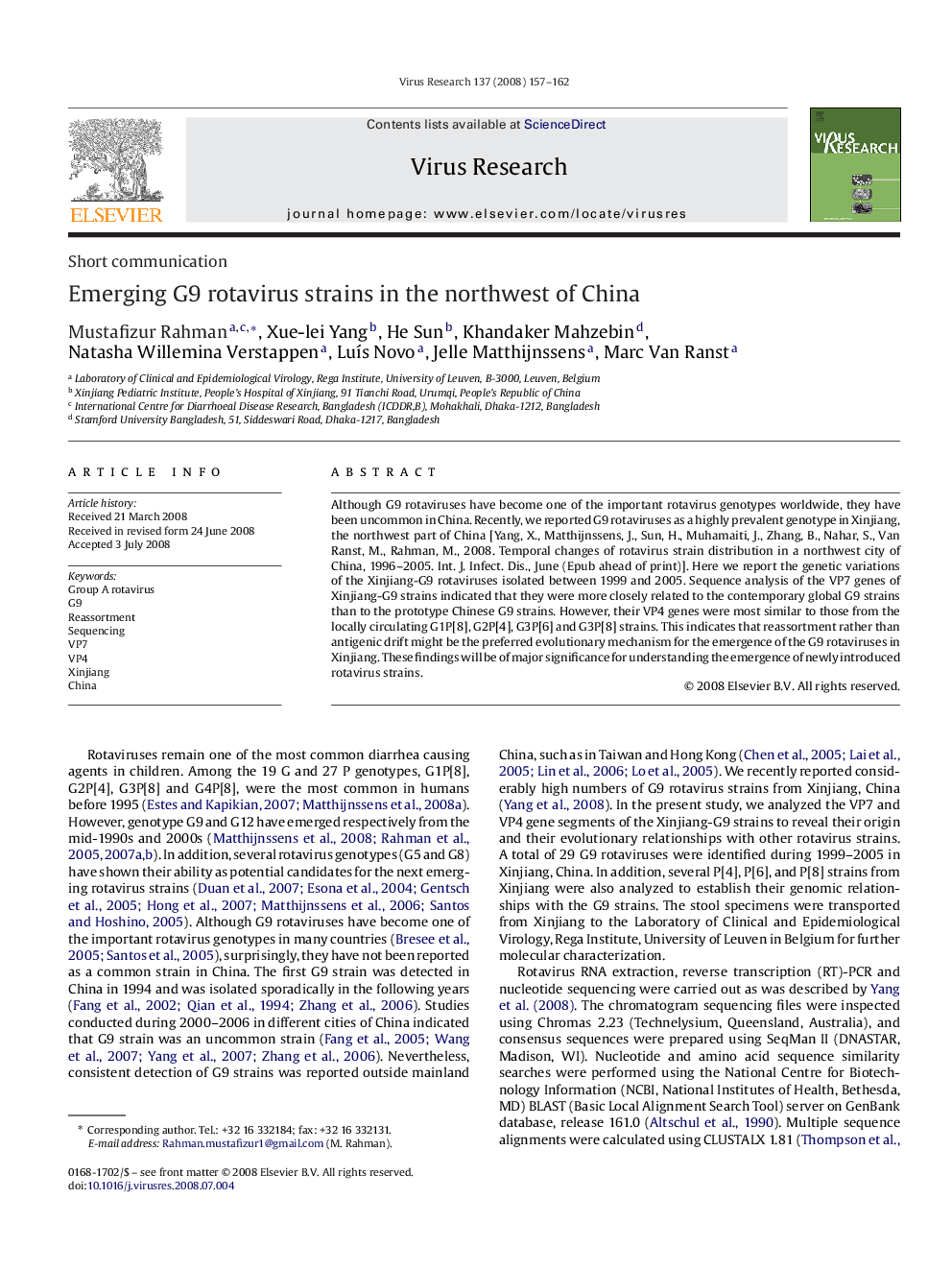| Article ID | Journal | Published Year | Pages | File Type |
|---|---|---|---|---|
| 3430342 | Virus Research | 2008 | 6 Pages |
Although G9 rotaviruses have become one of the important rotavirus genotypes worldwide, they have been uncommon in China. Recently, we reported G9 rotaviruses as a highly prevalent genotype in Xinjiang, the northwest part of China [Yang, X., Matthijnssens, J., Sun, H., Muhamaiti, J., Zhang, B., Nahar, S., Van Ranst, M., Rahman, M., 2008. Temporal changes of rotavirus strain distribution in a northwest city of China, 1996–2005. Int. J. Infect. Dis., June (Epub ahead of print)]. Here we report the genetic variations of the Xinjiang-G9 rotaviruses isolated between 1999 and 2005. Sequence analysis of the VP7 genes of Xinjiang-G9 strains indicated that they were more closely related to the contemporary global G9 strains than to the prototype Chinese G9 strains. However, their VP4 genes were most similar to those from the locally circulating G1P[8], G2P[4], G3P[6] and G3P[8] strains. This indicates that reassortment rather than antigenic drift might be the preferred evolutionary mechanism for the emergence of the G9 rotaviruses in Xinjiang. These findings will be of major significance for understanding the emergence of newly introduced rotavirus strains.
